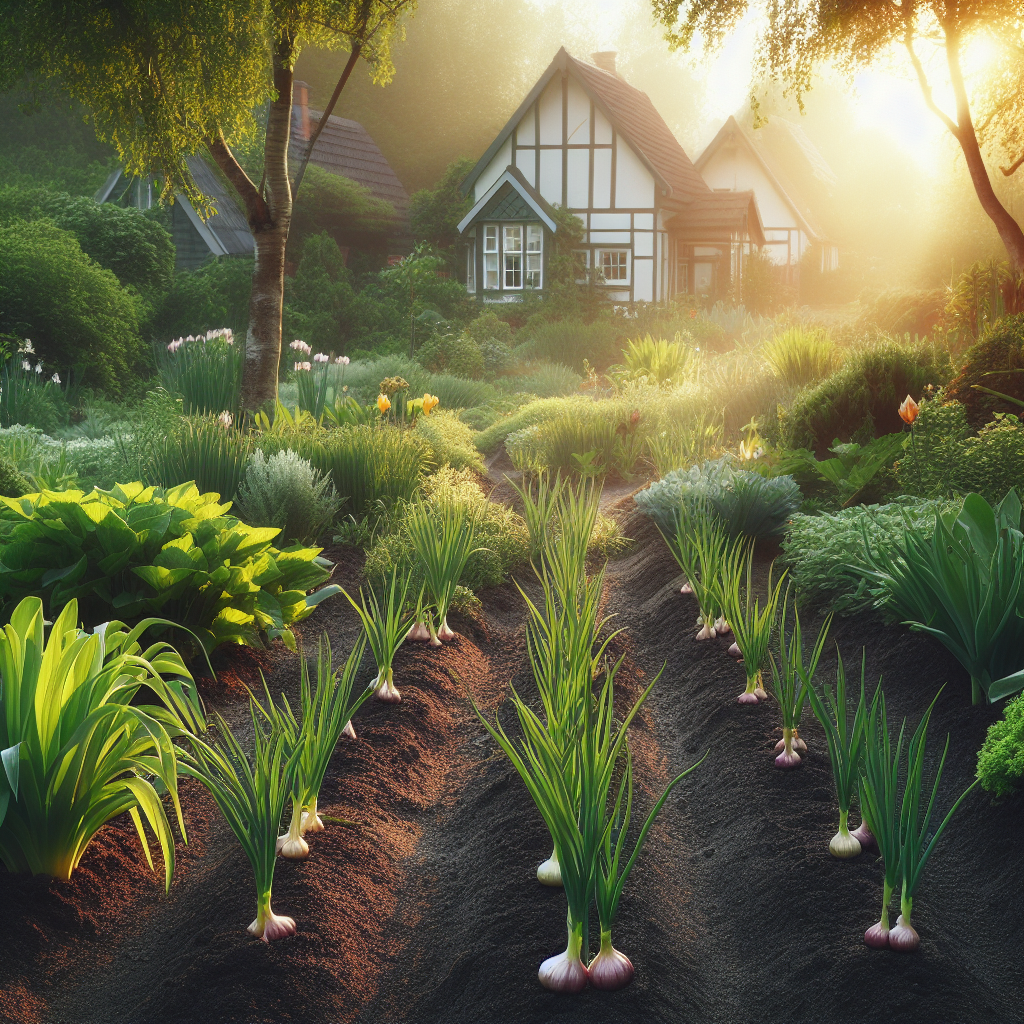Garlic, the aromatic bulb known for its culinary magic and pest-repelling prowess, is a staple in many kitchens. In this detailed guide crafted for hobbyist gardeners, we will explore the nuances of cultivating garlic, covering essential information, pro tips, and variety insights for a thriving garlic harvest.
Botanical Overview
- Botanical Name: Allium sativum
- Common Names: Krathiem, Bawang putih, Bawang
- Family: Alliaceae
Plant Description
Garlic is recognized by its well-known bulb structure with flat, grey-green leaves. While various varieties suit different climate zones, garlic generally thrives in light, well-drained soil and full sun. Enhance soil quality by incorporating compost or well-rotted manure before planting. Adequate mulching is essential to combat weed competition. Regular watering, especially during bulb formation, contributes to optimal growth. Cease watering when the foliage begins to brown.
Uses
- Culinary Delight: Garlic is a culinary chameleon, adding depth to dishes through baking, boiling, sautéing, or grilling. Its nutritional profile, rich in vitamins A, B1, B2, and C, makes it not just flavorful but also healthy.
- Pest Control: Leverage garlic’s pest-repelling properties by strategically planting it among roses and fruit trees to deter nuisances like aphids.
Planting Details
- Recommended Planting Time: Separate garlic bulbs into cloves before planting. In warmer climates (Qld and northern NSW), plant in March to early April for a September harvest. In cooler climates, autumn or spring planting is suitable.
- Planting Depth: Place the tops of the bulbs just below the soil surface, with the flatter or root end pointing downward.
- Sowing Rate: Plant cloves approximately 10 cm apart, maintaining rows with a spacing of about 40 cm.
Harvest and Storage
- Timing: Harvest when the tops begin to turn brown; waiting until complete browning is not necessary.
- Gentle Handling: Treat bulbs gently during harvest, as bruised bulbs have reduced storage life. Dry them undercover for 2 to 3 weeks until the skins become papery.
- Storage Tips: Store bulbs whole, without separating cloves, for better longevity. Plaiting garlic or removing leaves and roots facilitates storage in racks or net bags with proper air circulation.
Variety Information
- Australian White: A soft-neck type suitable for cold temperate climates, featuring a white skin and occasional purple marks.
- Glenlarge: A purple-skinned, top-setting, day-length neutral garlic ideal for warmer areas, particularly from the Atherton Tableland to SA.
- Italian White: A creamy white-skinned, medium to large bulb with a softneck, excellent for culinary use.
- Monaro Purple: A hardneck or top-setting variety, perfect for cooler areas, known for its sweet, nutty flavor and distinctive flower stem twist.
- Red Rocambole: A hardneck or top-setting garlic with crimson skin, relabeled as a Creole type, suitable for a range of growing areas, particularly favored by gourmet enthusiasts.
Tips for Hobbyist Gardeners
- Frost Protection: While garlic is generally frost-tender, light frosts are manageable. Consider providing protection during colder spells.
- Moisture Management: Consistent soil moisture, especially during bulb formation, is vital. Avoid complete drying out of the soil.
- Shade Preference: Plant garlic strategically under taller plants to provide the shade it prefers for optimal growth.
- Careful Handling: Handle garlic bulbs and cloves with care to preserve their integrity, ensuring a bountiful harvest.
Ensures a fresh supply
Cultivating garlic in your home garden not only ensures a fresh supply for your culinary adventures but also contributes to a pest-resistant and vibrant garden. By understanding the nuances of planting, caring for, and harvesting garlic, hobbyist gardeners can embark on a flavourful journey with this versatile and beneficial herb.
